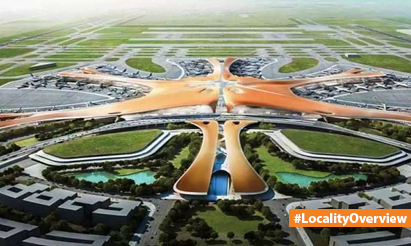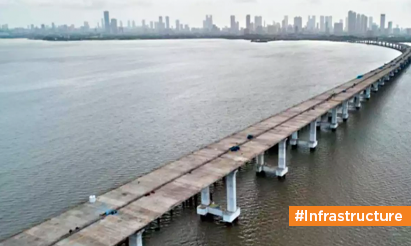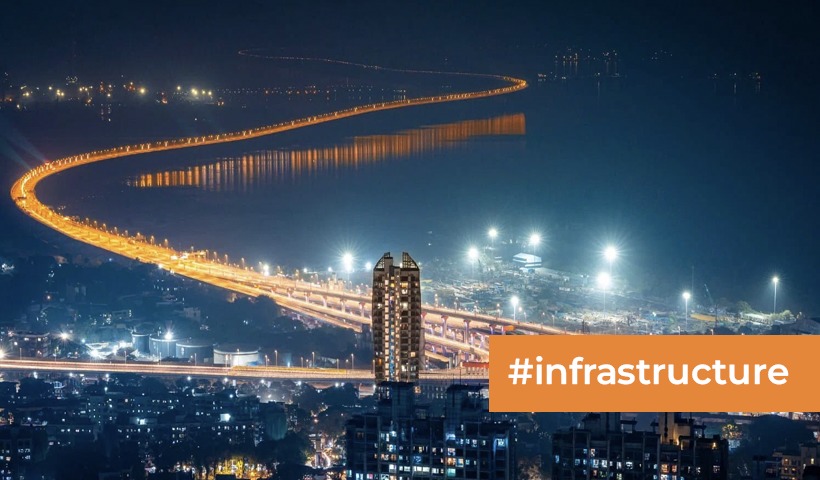Navi Mumbai International Airport Construction Progress: A Glimpse into India’s Aviation Future
As India propels itself into a new era of economic growth and infrastructure development, the aviation sector stands at the forefront of expansion. The Navi Mumbai International Airport (NMIA) represents a pivotal project in this trajectory, promising to alleviate the load on existing airports and contribute significantly to the country’s air travel capacity. In this in-depth exploration, we delve into the current status of the Navi Mumbai International Airport construction, tracking its progress and the anticipated commencement in December 2024.
- Background:
Location and Need: The Navi Mumbai International Airport is strategically located in the Kopra-Panvel area of Maharashtra. This location was chosen to cater to the growing air travel demands in the Mumbai Metropolitan Region (MMR), easing congestion at the existing Chhatrapati Shivaji Maharaj International Airport.
Capacity and Impact: With a proposed annual passenger handling capacity of around 60 million, the NMIA is poised to become a major aviation hub. The increased capacity is expected to support the burgeoning air travel needs of Mumbai and its neighboring regions, fostering economic development and job creation. - Construction Timeline:
Project Inception: The idea of a second airport for Mumbai was conceived to address the limitations of the existing airport’s capacity. The NMIA project received approval in 2010, marking the initiation of the ambitious venture.
Land Acquisition Challenges: Land acquisition posed a significant challenge for the project, requiring the relocation of several villages and rehabilitation of affected residents. Despite these challenges, the authorities managed to acquire the necessary land, setting the stage for construction.
Construction Commencement: The actual construction work for the Navi Mumbai International Airport commenced in 2018 after overcoming initial delays. The construction process involves various phases, including land development, terminal construction, runway development, and infrastructure setup. - Key Components of Construction:
Runway Development: The construction of runways is a critical aspect of airport development. The NMIA is designed to have two parallel runways to facilitate simultaneous takeoffs and landings, optimizing air traffic efficiency.
Terminal Buildings: Terminal buildings are the face of any airport, serving as crucial points for passenger arrivals, departures, and other essential services. The NMIA is expected to feature state-of-the-art terminal buildings equipped with modern amenities and facilities.
Air Traffic Control (ATC) Tower: The ATC tower is a vital component of airport infrastructure, ensuring the safe and efficient management of air traffic. The NMIA is anticipated to have a sophisticated ATC tower equipped with advanced technology to handle the increasing air traffic in the region.
Connectivity: Seamless connectivity is a key focus in airport design. The NMIA is integrated into the larger transportation network, featuring road and rail links for convenient access. The upcoming Navi Mumbai Metro is also expected to enhance connectivity to the airport. - Economic and Employment Impact:
Job Creation: The construction and subsequent operation of the Navi Mumbai International Airport are expected to generate a significant number of employment opportunities. Jobs will be created across various sectors, including construction, aviation, hospitality, and retail.
Economic Boost: The airport is poised to contribute to the economic growth of the surrounding regions. Increased air traffic and connectivity often lead to a surge in tourism, business activities, and trade, fostering economic development. - Challenges and Solutions:
Land Acquisition and Rehabilitation: Land acquisition and the subsequent rehabilitation of affected communities posed initial challenges. Authorities have worked on implementing fair rehabilitation policies, providing compensation and alternative housing for those displaced.
Environmental Concerns: Airport construction often raises environmental concerns, including habitat disruption and increased pollution. The NMIA project incorporates environmental sustainability measures, such as waste management practices and efforts to minimize the impact on the surrounding ecosystem. - Anticipated Commencement in December 2024:
Construction Progress: As of the latest updates, the construction of the Navi Mumbai International Airport has been progressing steadily. Key infrastructure elements, including runways, taxiways, and terminal buildings, are taking shape.
Targeted Completion: The anticipated commencement of operations in December 2024 is a significant milestone for the project. It aligns with the vision of providing additional air travel capacity to serve the needs of the growing population in Mumbai and its neighboring areas.
Regulatory Approvals: The project has received the necessary regulatory approvals, further solidifying its path towards completion. Authorities are working diligently to meet all requirements and ensure a seamless transition to operational status. - The Future of Aviation in Mumbai:
Increased Capacity: The Navi Mumbai International Airport is expected to significantly augment Mumbai’s air travel capacity, reducing congestion at the existing airport. The additional runway and terminal facilities will cater to the surging demand for air travel in the region.
Enhanced Connectivity: The airport’s strategic location is poised to enhance connectivity not only within India but also on international routes. This expanded connectivity is crucial for promoting tourism, trade, and economic growth.
Job Opportunities: The completion and operationalization of the NMIA will lead to a surge in job opportunities across various sectors. From aviation professionals to those in hospitality and retail, the airport is expected to become a significant employment hub.
Economic Growth: The Navi Mumbai International Airport is not just a transportation infrastructure project; it is a catalyst for economic growth. The increased economic activity around the airport, including trade and tourism, is expected to contribute to the overall prosperity of the region.
The Navi Mumbai International Airport represents a monumental step in India’s aviation journey. The progress made in its construction signifies a promising future for air travel in Mumbai and its surrounding regions. As the anticipated commencement in December 2024 approaches, the aviation landscape in India is set to witness a transformative change, with the NMIA playing a pivotal role in shaping the country’s air travel infrastructure. The Navi Mumbai International Airport is not just a testament to India’s commitment to modernizing its transportation systems but also a beacon of economic growth and development.
As the construction progresses and the targeted commencement date in December 2024 draws near, the anticipation among residents, travelers, and stakeholders continues to build. The completion of this ambitious project will mark a significant milestone in India’s efforts to meet the escalating demands of air travel, providing a much-needed boost to the nation’s aviation sector.




